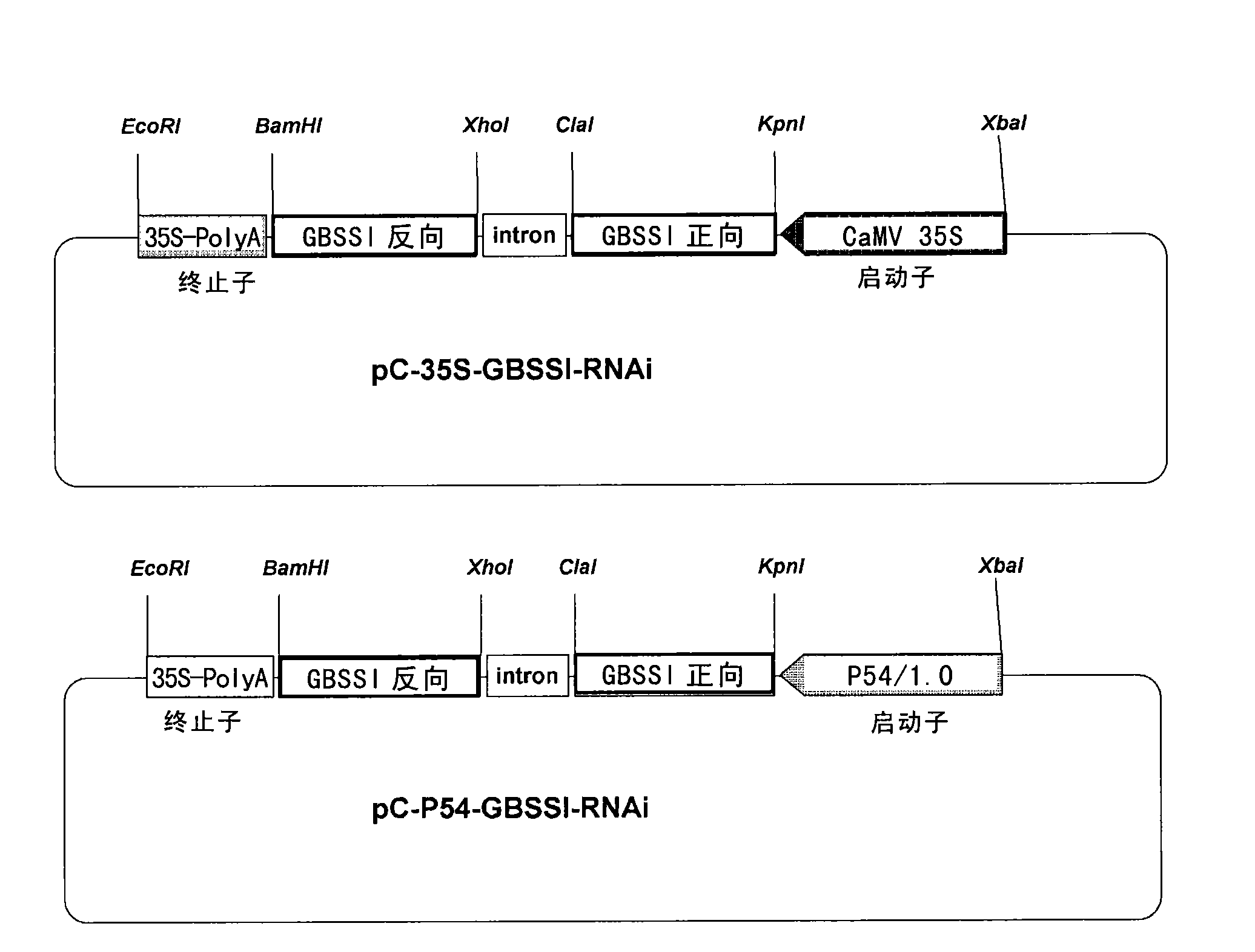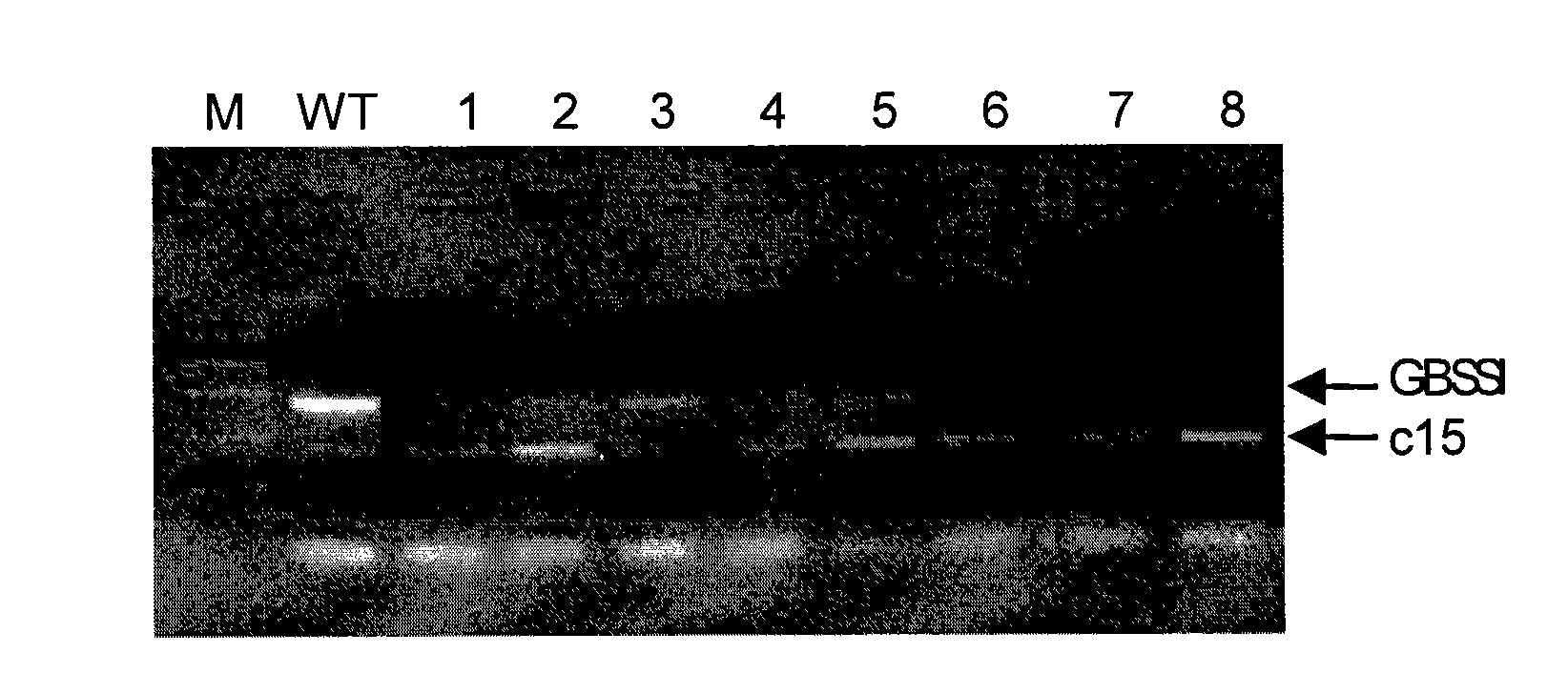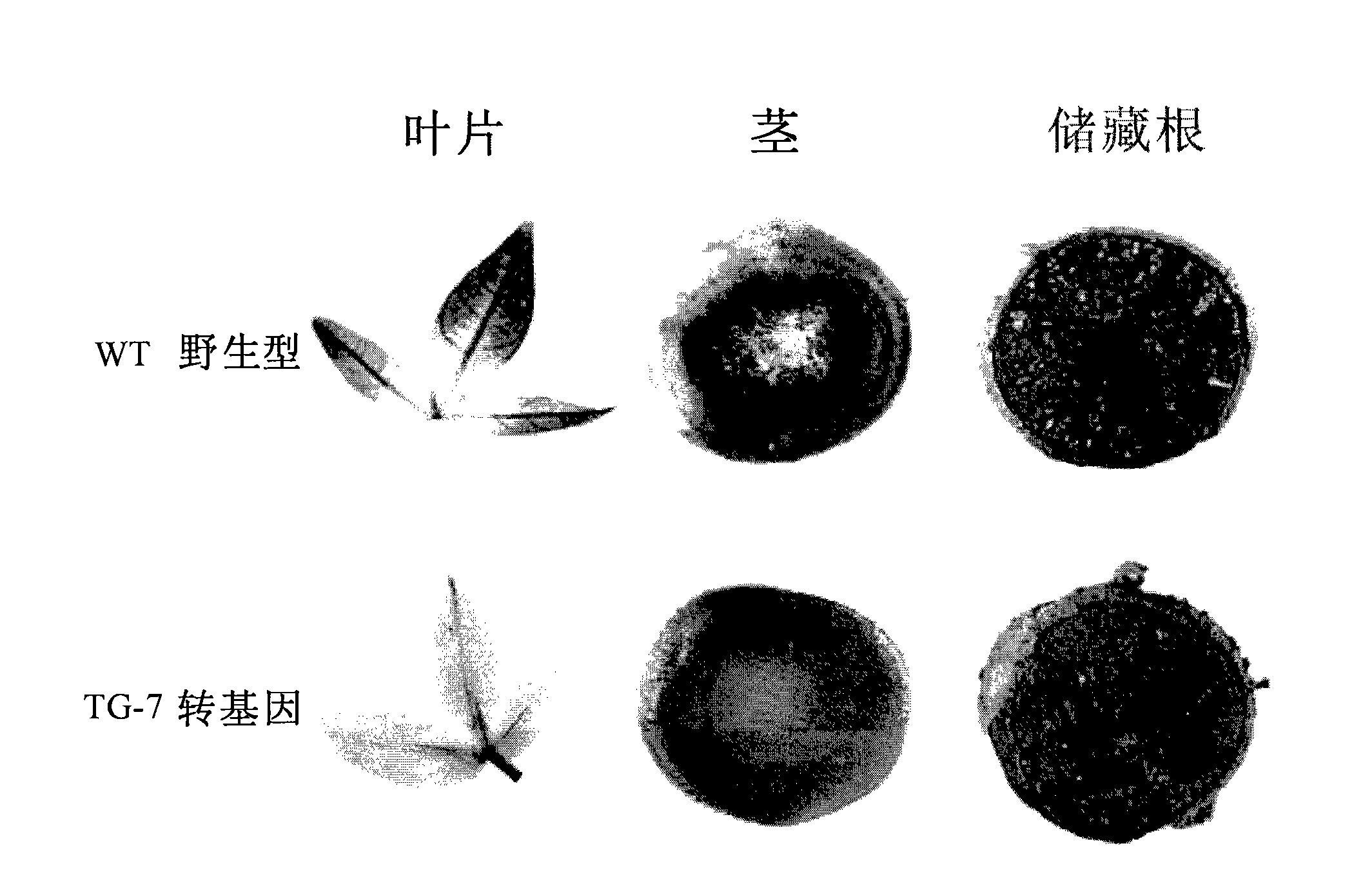Method for adjusting starch composition of root crops
A plant and plant cell technology, applied in the field of biotechnology or botany, can solve the problems of difficulty in meeting the urgent needs of the starch processing industry, and time-consuming
- Summary
- Abstract
- Description
- Claims
- Application Information
AI Technical Summary
Problems solved by technology
Method used
Image
Examples
Embodiment 1
[0076] Embodiment 1, vector construction
[0077] According to the published GBSSI gene sequence (NCBI accession number: X74160), the appropriate region in GBSSI (that is, the 1371-1570th position in SEQ ID NO: 1) was obtained, through an artificially synthesized intron (SEQ ID NO: 2) Forward and reverse connection as a spacer sequence, inserted into CaMV 35S (conventional constitutive promoter) or P54 (cassava vascular bundle specific expression promoter, Genbank accession number: AY217353, using the 1080bp sequence upstream of the start codon ( That is, in the EcoRI and XbaI sites of the pCAMBIA1300 binary vector driven by the -1~-1080)) promoter, the recombinant vectors pC-35S-GBSSI-RNAi and pC-P54-GBSSI-RNAi ( figure 1 ), used to transform cassava to prepare transgenic plants.
[0078] The intron sequence used was (SEQ ID NO: 2):
[0079] 5-GTACTATAGTATTTTGGTACCTTTACAATCGGTTTTTTACCTTTTCTTCTTTATTTATTAAATTTATAG-3.
Embodiment 2
[0080] Embodiment 2, preparation and plant regeneration of transgenic cassava and sweet potato
[0081] Cassava brittle calli were transformed with Agrobacterium containing the two recombinant binary vectors of pC-35S-GBSSI-RNAi and pC-P54-GBSSI-RNAi, respectively, and transgenic plants were obtained through regeneration through embryogenesis and organogenesis. The specific method is as follows:
[0082] 1. Use a sterilized toothpick to pick a single clone of Agrobacterium containing the recombinant binary vector from the plate, place it on the resistant YEB medium, and culture it overnight at 28°C and 240rpm with shaking.
[0083] 2. Take 25μl of bacterial liquid, add it to 50ml of fresh YEB medium, and cultivate for 12-20 hours to OD 600 0.5-1.0.
[0084] 3. Centrifuge the bacterial solution at 6000 rpm at 4°C for 10 min, suspend and wash with 50 ml liquid MS medium (PH 5.3), and centrifuge again. Resuspend the bacterial liquid in liquid MS medium containing 200 μM acetos...
Embodiment 3
[0097] Embodiment 3, transgenic plant detection
[0098] RT-PCR was used to detect the expression of GBSSI gene in transgenic cassava from the molecular level. Total RNA was extracted from the leaves of wild-type and transgenic cassava seedlings using TIANGEN's TRIZOL (DP421) reagent, with oligo (dT) as the first-strand primer, and M-MLV reverse transcriptase (TIANGENER104-03) reversed Record it as cDNA, perform double PCR amplification with the respective specific primers of GBSSI and c15 gene, and obtain the result.
[0099] see results figure 2 , indicating that the expression of the GBSSI gene in the eight transgenic cassava lines was greatly disturbed.
[0100] Similarly, RT-PCR can be used to detect the expression of the GBSSI gene in the transgenic sweet potato at the molecular level, and it was found that the expression of the GBSSI gene in the transgenic plants was greatly disturbed.
PUM
 Login to View More
Login to View More Abstract
Description
Claims
Application Information
 Login to View More
Login to View More - R&D
- Intellectual Property
- Life Sciences
- Materials
- Tech Scout
- Unparalleled Data Quality
- Higher Quality Content
- 60% Fewer Hallucinations
Browse by: Latest US Patents, China's latest patents, Technical Efficacy Thesaurus, Application Domain, Technology Topic, Popular Technical Reports.
© 2025 PatSnap. All rights reserved.Legal|Privacy policy|Modern Slavery Act Transparency Statement|Sitemap|About US| Contact US: help@patsnap.com



